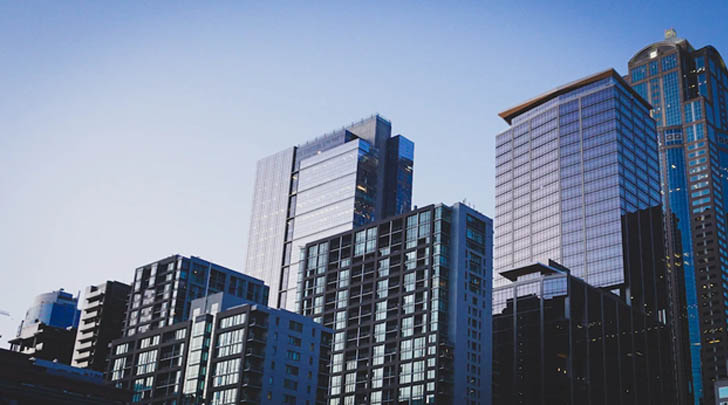By Sahil Verma , COO of Shray Projects: As we move deeper into 2025, India’s commercial real estate (CRE) market is staging a remarkable comeback.
After weathering uncertainties over the past few years, the sector today stands on a solid foundation of economic resilience, technological advancement, and evolving workplace dynamics.
Interestingly, while the revival is visible across India, the Delhi-NCR market — led by Gurugram and key zones in Delhi — is emerging as a powerful case study of this transformation, offering both global relevance and local insight.
Economic Resilience and the Rise of Growth Corridors
India’s overall economic trajectory remains a tailwind for commercial real estate. With consistent GDP growth and a buoyant business environment, leasing activity touched record levels in 2024.
What’s notable is how hubs like Delhi-NCR have benefitted disproportionately from this upswing. The region’s integrated infrastructure — expressways, metro connectivity, and proximity to the airport — continues to attract multinational corporations and large domestic enterprises alike.
Gurugram’s Golf Course Extension Road, Cyber City, and newer micro-markets are experiencing healthy absorption rates, as corporates lock in premium spaces that align with their expansion goals.
The surge of Global Capability Centres (GCCs) choosing India as a base — growing at over 11% CAGR — has also amplified demand for high-quality office stock in NCR, making it one of the most active commercial markets in the country.
Hybrid Work and Flex-Space Evolution
The return to office is no longer speculative — it is materialising in a structured, hybrid form. Workplaces today are not just about square footage but about experience, flexibility, and adaptability.
Delhi and Gurugram’s commercial projects reflect this evolution well. Flexible workspaces, already popular among startups, have seen robust adoption by larger enterprises looking to balance fixed commitments with scalability.
Operators have responded by expanding footprints and enhancing services, with occupancies now rivaling pre-pandemic levels.
The combination of hybrid models and “core + flex” strategies is influencing how commercial spaces are being designed and leased, and Delhi-NCR remains at the forefront of this adaptive shift.
Sustainability: A Defining Priority
Sustainability is no longer a buzzword but a decisive factor in commercial real estate choices. Across the board, businesses are opting for green-certified buildings that deliver both ESG compliance and operational efficiency.
In markets like Delhi-NCR, developers are raising the bar with projects pursuing LEED Gold and Platinum certifications.
Premium commercial districts are increasingly characterised by energy-efficient designs, water recycling systems, and smart energy management — features that are not just environment-friendly but also offer tangible cost benefits over time.
The outcome? Green-certified spaces are commanding rental premiums, sometimes as high as 12–14%, while enhancing long-term asset value and tenant satisfaction.
Tech-Driven, Future-Ready Spaces
Technology is quietly but profoundly reshaping the commercial real estate landscape. From AI-powered energy optimisation to IoT-enabled smart offices, tech is creating environments that are safer, smarter, and more efficient.
This integration is particularly visible in high-demand zones like Delhi’s Aerocity and Gurugram’s emerging business parks.
Enterprises are prioritising properties that offer touchless experiences, advanced security protocols, and tech-led facility management, ensuring future-readiness in an era of increasing digital dependency.
For investors and occupiers alike, tech-driven assets are reducing operational risks and offering enhanced visibility over space utilisation and energy consumption — a win-win for all stakeholders.
Warehousing, Logistics, and the Urban Expansion Story
Beyond office towers, commercial real estate growth is being powered by the rapid expansion of warehousing and logistics hubs.
The boom in e-commerce and quick-commerce is creating unprecedented demand for urban storage and last-mile delivery spaces.
Strategically located areas around Delhi and Gurugram, such as Manesar, Sohna, and peripheral expressway corridors, are witnessing heightened activity.
These zones are becoming essential nodes in the supply chain, backed by robust infrastructure investments and seamless connectivity.
Such developments underline a broader trend: commercial real estate is diversifying, responding to consumer behaviour and business needs in real time.
Conclusion: A Market Redefined for Growth
India’s commercial real estate sector enters 2025 not just in recovery mode but in renaissance. What we are witnessing is not a cyclical rebound but a structural evolution — a sector embracing new technologies, sustainable practices, and flexible models to stay ahead of the curve.
Delhi-NCR exemplifies this transformation. Its blend of premium office spaces, flexible work environments, sustainable developments, and expanding logistics hubs positions it as a microcosm of India’s broader commercial real estate resurgence.
For investors, developers, and occupiers alike, the message is clear: commercial real estate in 2025 is not just making a comeback — it is shaping the future of how and where India works.
| Are you an
Entrepreneur or Startup? Do you have a Success Story to Share? SugerMint would like to share your success story. We cover entrepreneur Stories, Startup News, Women entrepreneur stories, and Startup stories |
Read business articles related to Sales, Marketing, Advertising, Finance, Entrepreneurship, Management, Education, and Industry at SugerMint. Follow us on Twitter, Instagram, Facebook, LinkedIn
Source:https://sugermint.com/why-commercial-real-estate-is-making-a-comeback-in-2025/

